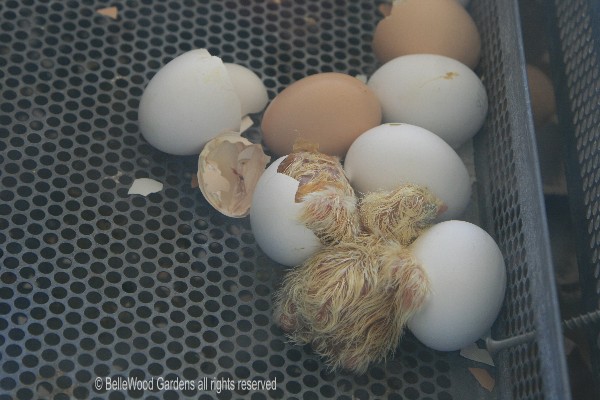
Friday, 26 August 2011
Poultry and Rabbits at the 4-H Fair
Right now, the poultry and rabbit exhibitors have a tent for their critters. But they're raising money
(selling point-of-lay Rhode Island Red pullets, for example) and will eventually have a barn of their own.

The display incubator with hatching eggs is always a popular display. Exhausted, two wet chicks
- one only halfway out of its shell - rest and gather their strength to face the big outside world.
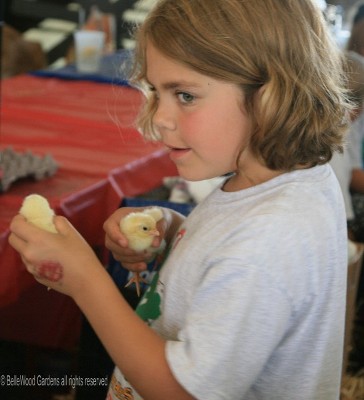
Once they dry out, fluff up and examine the world with their
bright little beady black eyes they look much more appealing.
Something with which this young exhibitor clearly agrees.
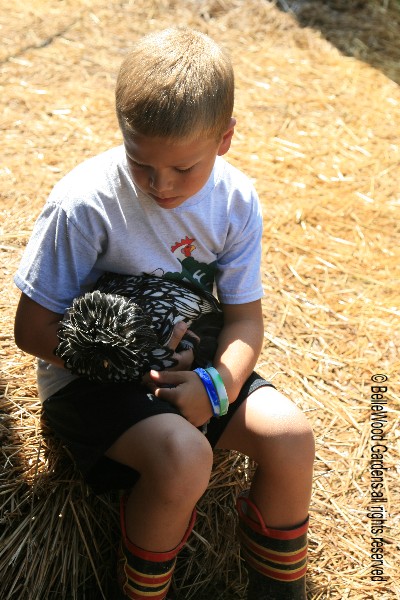
Waiting his turn in the show ring this boy sits quietly with his chicken.
Mulling over the "how to show" advice I heard his mother tell him?
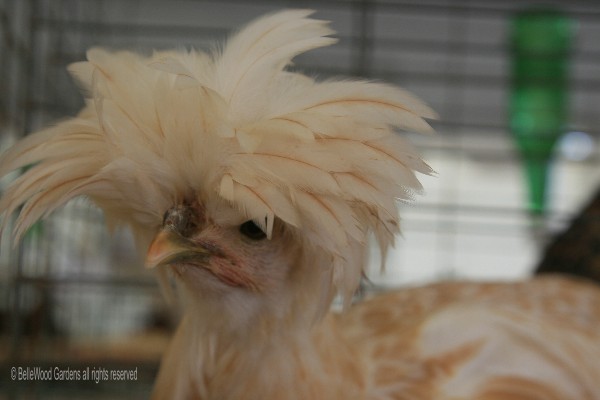
This year there were numerous crested Polish chickens. Love their froo-froo feathered topknots.
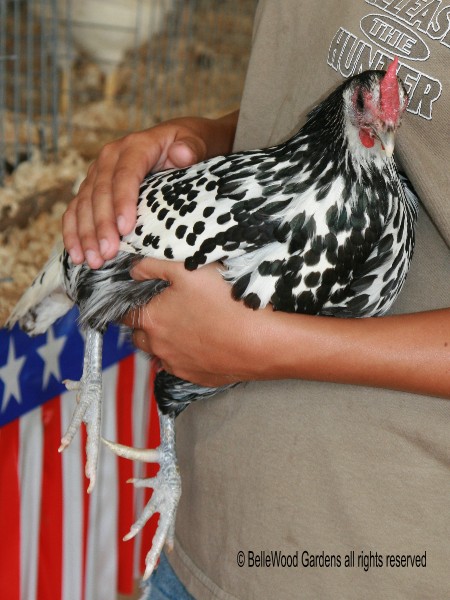
Others have elegant feathers, like this spangled Hamburg chicken in black on white.

This is an Egyptian Fayoumis, a rare breed of fairly small active chickens that have been raised in the Fayoumi Governorate, southwest of Cairo and west of the Nile for millenia. Very precocious and early maturing, cockerels will begin crowing as young as 6 weeks, and pullets may begin to lay at 4 months. They're excellent layers of smallish white eggs, but poor at brooding. Long necked and very high, almost vertical tail carriage make this an attractive, active breed. Good foragers, Egyptian Fayoumis can free range. With excellent flying abilities they're escape artists, screaming like a Guinea fowl when recaptured. However they're not aggressive towards people and the males are even fairly tolerant of other roosters. It was first imported into the United States for breeding work as it is resistant to viral and bacterial infection.

Bad hair, I mean feather, day? This chicken only has monotone white feathers, but they're funky and frizzled.
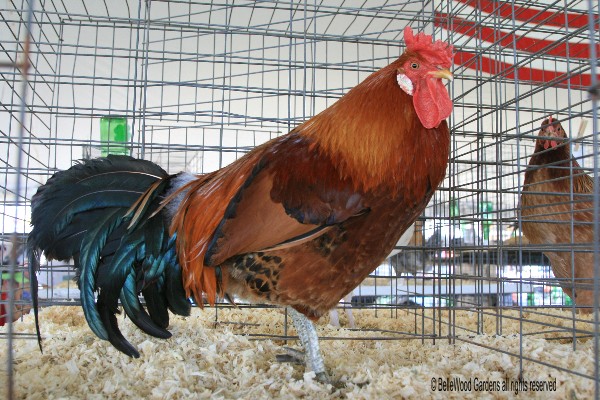
Chanticleer, to be sure. This magnificent rooster is a Sicilian Buttercup. What superb feathering! The cup shaped comb with a complete circle of medium sized regular points is unique to this breed. First imported into the US in 1835, present stock descends from hatching eggs imported in 1892. An active breed, good fliers and free-ranging, they dislike close confinement and need some room to roam around. As might be expected of a breed native to Sicily they're not very cold hardy.

Ears up, whiffling nose, bright black eyes, and a curious rabbit looks me over, ready for a surprise.

I was amused by this stupified little Dutch rabbit. Apparently, as I was told by his owner,
if you lay a rabbit on its back and tickle its tummy it will blissfully lay there, almost hypnotized.
If you enjoyed this visit to the fair you can find the other entries here for cows and horses, here for sheep and goats, and here for agricultural entries and bees.